7 Take the following data as referring to 2000 they come fro
Solution
a.
P
Millions
A
PPP US$
T
Tonnes
I
Millions
Tonnes
Rich OECD
848
26050
0.0005
11,045
EE and CIS
398
6290
0.0001
250
Developing
4610
3530
0.0006
9764
World
5856
21,059
b)
Population
Share
%
Carbon
Dioxide
Share
%
Rich OECD
14.48
52.45
EE and CIS
6.80
1.19
Developing
78.72
46.36
c)
P
Millions
A
PPP US$
T
Tonnes
I
Millions
Tonnes
Rich OECD
1088
54842
0.0005
29834
EE and CIS
511
21619
0.0001
1105
Developing
9705
15475
0.0006
World
11304
121050
World CO2 2050 is 5.75 times of World CO2 2000
Population
Share
%
Carbon
Dioxide
Share
%
Rich OECD
9.63
24.64
EE and CIS
4.52
0.91
Developing
85.85
74.44
d) For P = 1088 and A = 54842, I = 11045, means T = 0.0001851 - emissions per unit income at 0.37 x 2000 level.Then for 2050 with T for EE and CIS in 2050 is the same as T for Rich OECD in 2000
P
Millions
A
PPP US$
T
Tonnes
I
Millions
Tonnes
Rich OECD
1088
54842
0.0001851
11044
EE and CIS
511
21619
0.0005
5524
Developing
9705
15475
0.0006
90111
World
11304
106,679
so 2050 shares would be
Population
Share
%
Carbon
Dioxide
Share
%
Rich OECD
9.63
10.35
EE and CIS
4.52
5.18
Developing
85.85
84.47
| P Millions | A PPP US$ | T Tonnes | I Millions Tonnes | |
| Rich OECD | 848 | 26050 | 0.0005 | 11,045 |
| EE and CIS | 398 | 6290 | 0.0001 | 250 |
| Developing | 4610 | 3530 | 0.0006 | 9764 |
| World | 5856 | 21,059 |
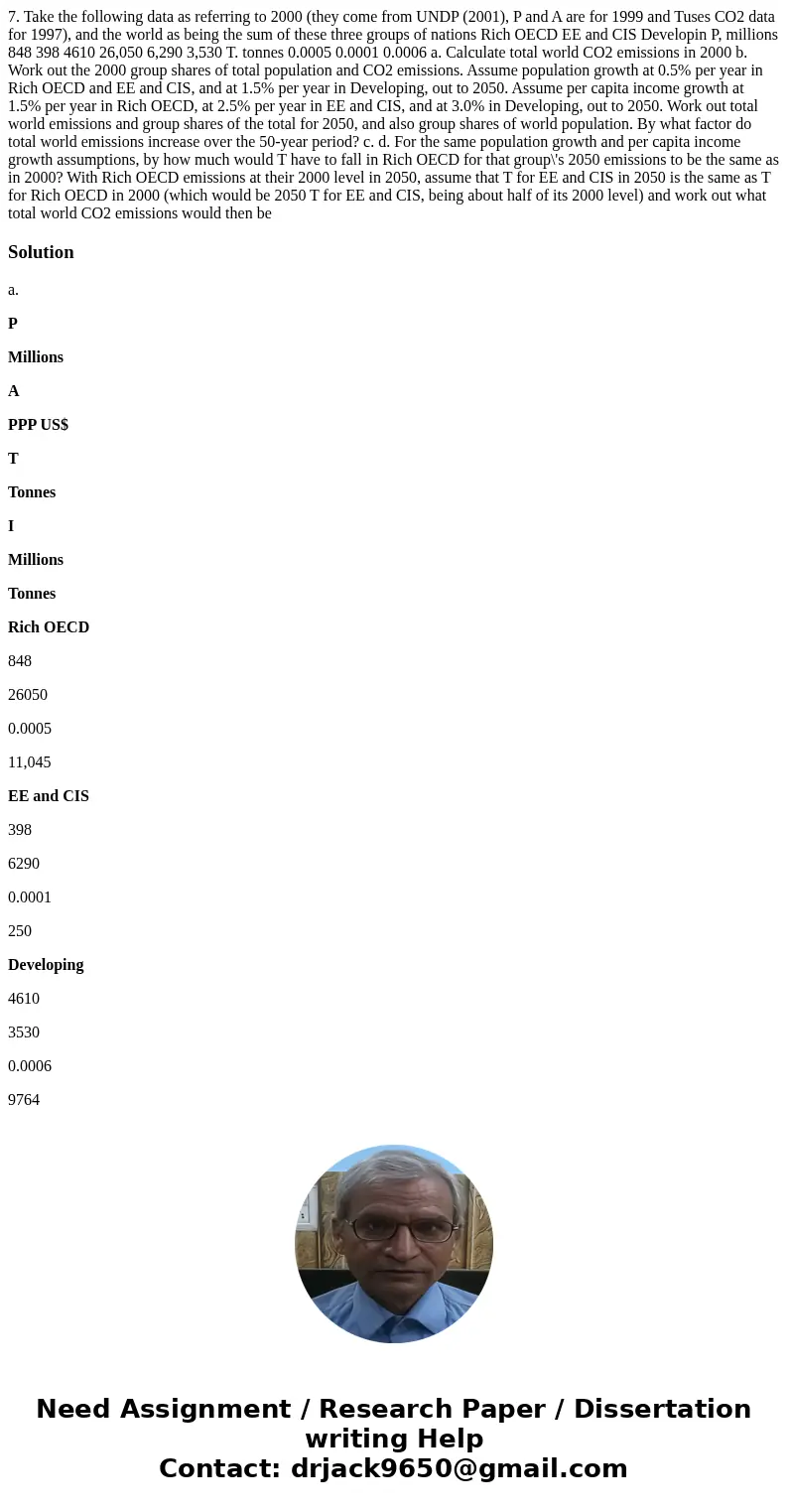
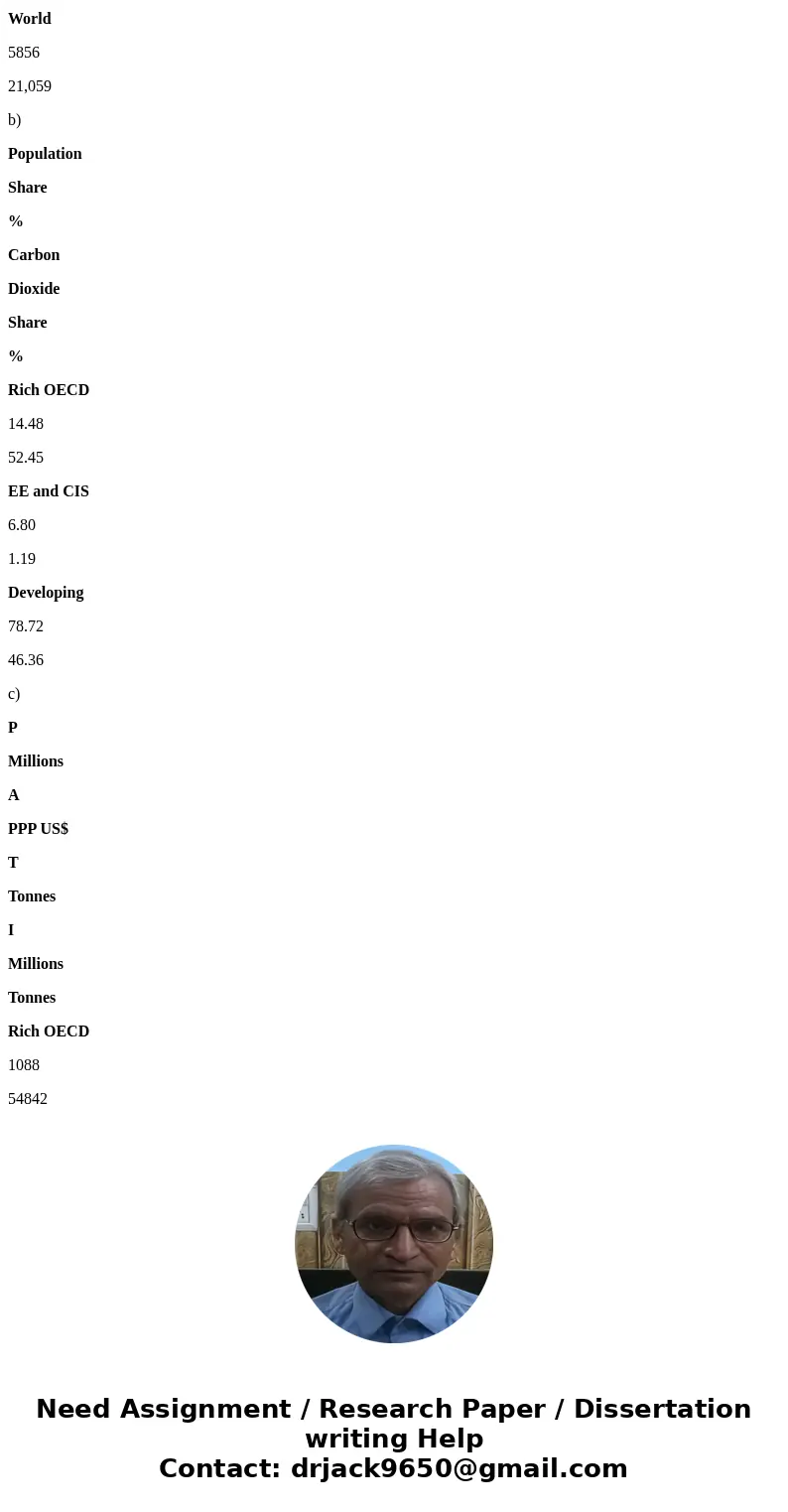
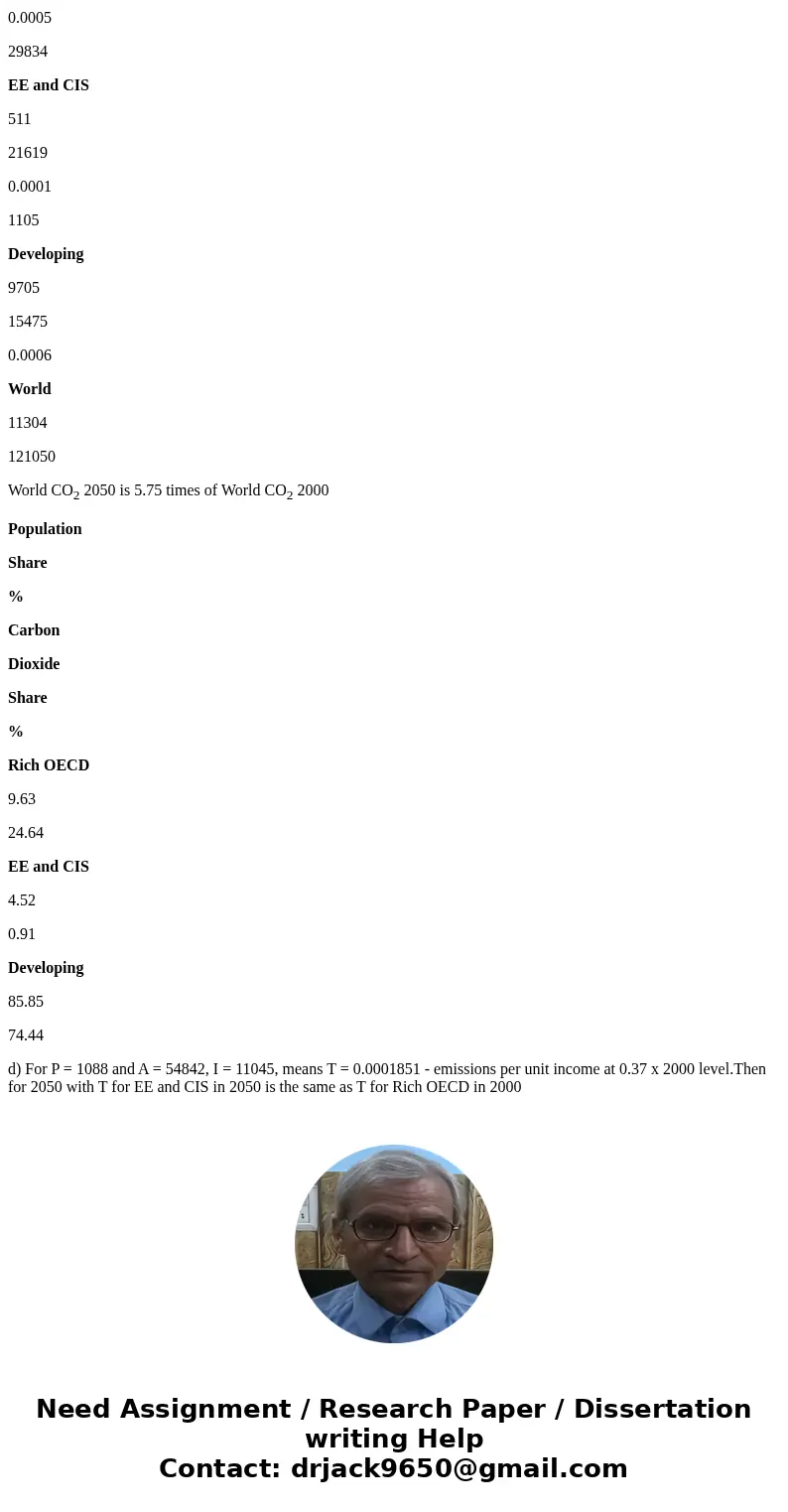
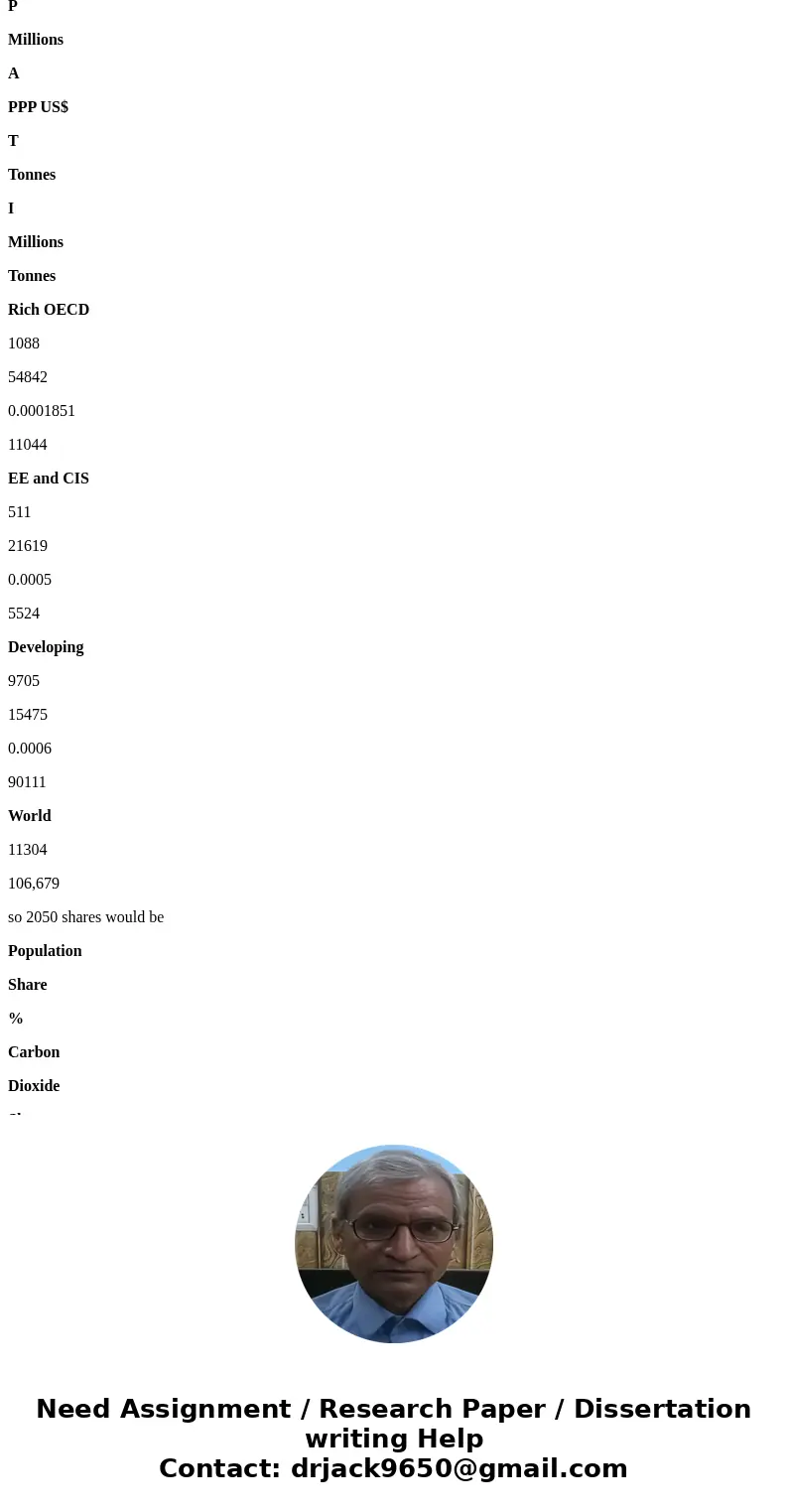
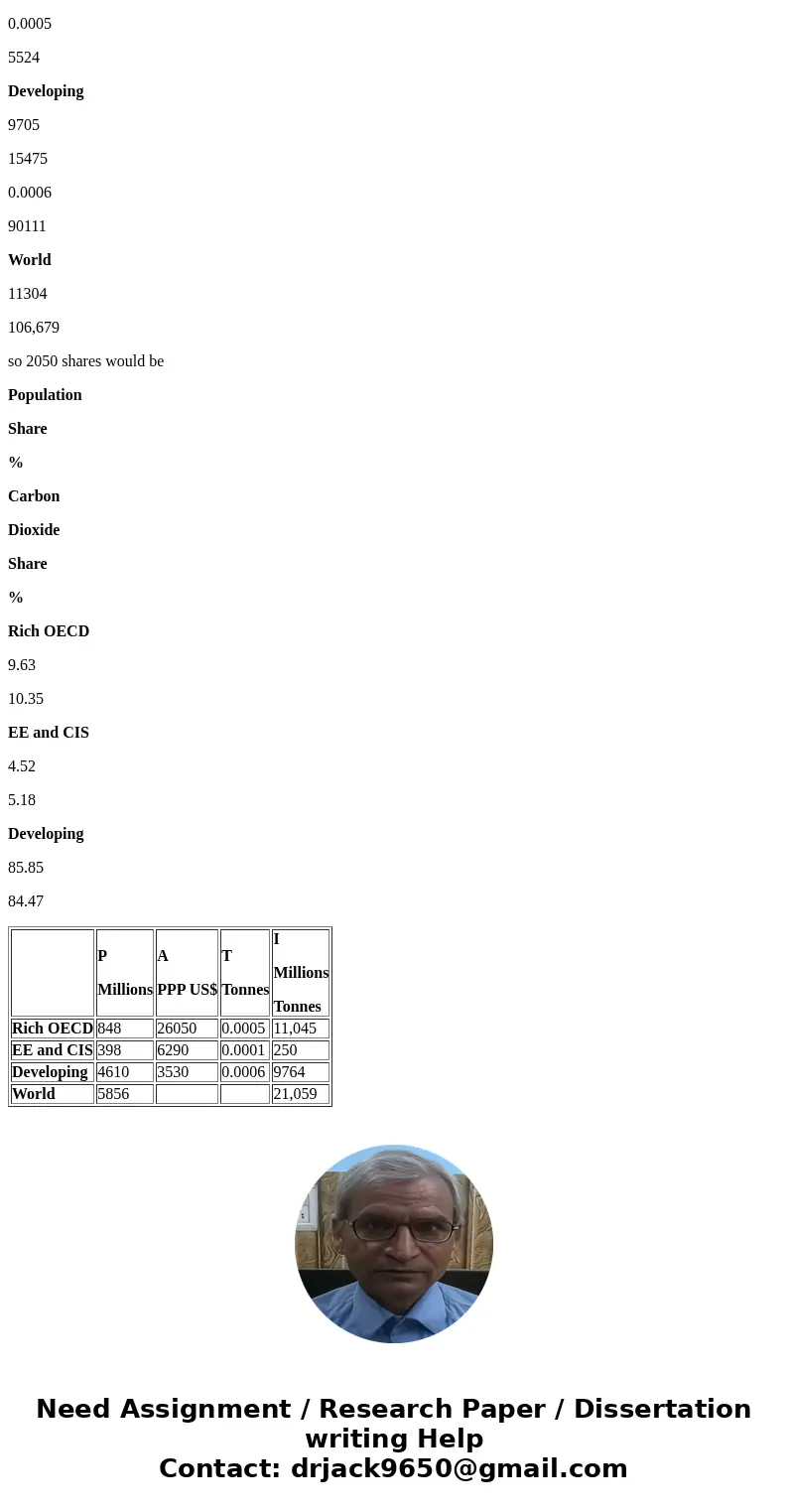
 Homework Sourse
Homework Sourse